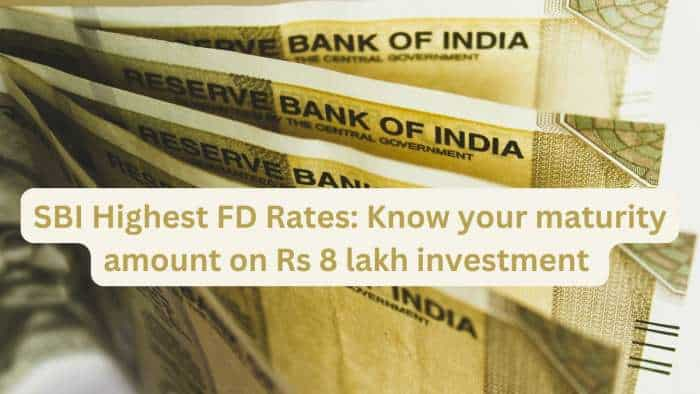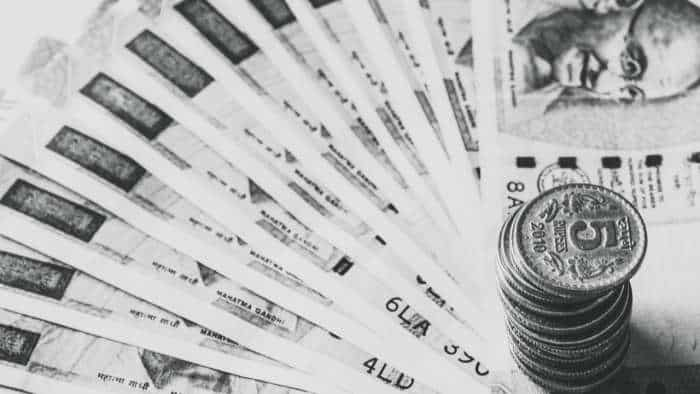RBI Monetary Policy: 11 factors that hinge on Urjit Patel’s key rate decision
The bloodbath in markets is a roar for ‘no rate hike’, while the weakness in rupee cries out for an urgent need for a ‘rate hike’.

Everyone is looking at the Reserve Bank of India (RBI) with bated breath now. RBI Governor Urjit Patel along with MPC members will be presenting India’s fourth bi-monthly monetary policy for fiscal year FY19 today at around 14:30 hours. The stage is set, predictions have been made, markets have given their reaction and of course, rupee has continued to fall. In today’s trading session, the benchmark Sensex index has given away its 35,000-mark and was trading at 34,878.58 down by 290.58 or 0.83%. While Nifty 50 was trading at 10,485.90 lower by 113.35 points or 1.07%. On the other hand, the Indian rupee recovered 6 paise to 73.52 against the US dollar at the forex market ahead of RBI’s policy. The bloodbath in markets is a roar for ‘no rate hike’, while the weakness in rupee cries out for an urgent need for a ‘rate hike’.
RBI has hiked the policy repo rate by 25 basis points each in June and August 2018 policy, taking the rate at two-year high of 6.50%. The last time India witnessed this rate was in April 2016 policy. Moreover, the reverse repo rate now stands at 6.25%, while the marginal standing facility (MSF) rate and the Bank Rate to 6.75%.
A poll carried out by Zee Business revealed that 70% expect a rate hike of 25 basis point, while 30% favor a status quo and 0% hoping for 50 basis points hike.
Well, whether RBI decides to maintain a status quo or rate hike,is something that everyone will be keenly waiting for, but here we provide a list of 11 factors that hinge on RBI’s decision:
GDP
The Indian economy registered an impressive growth of 8.2 per cent during April-June period of the current financial year 2018-19. The number, highest in last 15-quarter, showed that the economy is doing well leaving behind the effects of demonetisation and the Goods and Services Tax.
source: tradingeconomics.com
The impressive growth numbers can be attributed to the strong performance by core sectors, consumer spending and capacity improvement by companies.
CPI
The CPI or retail inflation eased to 3.69% during the month of August 2018 lower compared to 4.17% of the previous month. While core CPI inflation (ex. Food and fuel) also eased slightly to 5.8% Y-o-Y from 6.2% Y-o-Y in July. Sure the easing of CPI due to food inflation brings some comfort for RBI.
source: tradingeconomics.com
Interestingly, despite the moderation, house rent and the miscellaneous categories registered above 5% inflation rates.
WPI
India’s Wholesale Price Index (WPI) Inflation for the month of August 2018, where it stood at 4.53% compared to 5.09% of July 2018. However, WPI was higher compared to 3.24% rate recorded in the similar month of previous year.
source: tradingeconomics.com
With this, build up inflation rate in the financial year so far was 3.18% compared to a build up rate of 1.41% a year ago same month.
IIP
India's industrial production (IIP) or factory output for the month of July 2018 came in at 6.6% which was slightly lower compared to 6.9% recorded in previous month. However, this was higher compared to the level in the month of July 2017. The quick estimates of IIP with base 2011-12 for the month of July 2018 stands at 125.8.
The cumulative growth for the period April-July 2018 over the corresponding period of the previous year stands at 5.4%.
source: tradingeconomics.com
According to CARE Ratings, here’s a list of other key indicators that will impact RBI’s decision.
Crude oil prices
Oil prices (Brent) have increased by 14% from $72.3/barrel to $82.7/barrel during Aug 1 – Sep 29, 2018.
As per CARE Ratings, with OPEC ruling out increase in crude oil production and supply concerns ahead of the US sanctions on Iran, the oil prices will continue to move in the upward direction.
Rupee
Rupee has depreciated against US dollar from Rs 68.4 /$ to Rs 72.5/$ during Aug 1 – Sep 28, 2018.
CARE said, “Widening current account deficit(on account of higher oil prices), foreign fund outflows, market turmoil caused by escalating trade wars and rising US interest rates led to weakening of the rupee.”
RBI had sold dollars worth $16,308 million during this fiscal year to stem the depreciation in rupee.
Banks' credit demand
The credit demand has also picked up and has grown by 2% (-1.1%) during Apr 1 - Sep 14, 2018 higher than the 1.3%(- 0.9%) growth in the deposits.
OMO purchase
RBI’s announcement of measures including OMOs (purchase of Rs 20,000 cr since the last monetary policy) and allowing larger carve out from SLR up to 15% of NDTL from earlier 13% for LCR did provide some relief to the tight liquidity.
The RBI has also announced additional OMO purchase of Rs 36,000 crs in the month of October to further ease the liquidity conditions prevailing in the system.
Banking system liquidity
Banking system liquidity in the last 3 weeks has been in deficit with the current level being at Rs 40,531crs as on Sep 28’ 2018.
This is on account of continued intervention in forex market to stabilize the rupee, higher festive demand, liquidity issues with NBFCs , redemption pressures on mutual funds and quarter end demand by corporates.
GSec yield
GSec yields have been trending upwards; an increase of over 32 bps since the last monetary policy.
Global economy
Increased likelihood of US rate hikes, ECB’s decision to halt the quantitative easing programme from the end of this calendar year along with increase in oil prices can further pressurize the Indian currency.
US Fed further tightened the monetary policy and raised interest rate by 25 bps to a range of 2.00% to 2.25%. There is another rate hike expected from US central bank by end of December 2018.
Outlook
In CARE’s view, sharp depreciation of rupee, rise in crude oil prices, tight banking system liquidity coupled with US interest rate hike by 25 bps have pushed up the yields. The tone would be accommodative.
It added, “There could be an upward revision in the inflationary projections for the year on account of higher oil prices, increase in MSPs and imported inflation (on back of rupee depreciation). The August policy projected CPI inflation of 4.8% for H2FY19.
Get Latest Business News, Stock Market Updates and Videos; Check your tax outgo through Income Tax Calculator and save money through our Personal Finance coverage. Check Business Breaking News Live on Zee Business Twitter and Facebook. Subscribe on YouTube.
11:43 AM IST











 Delaying cuts will lead to more growth sacrifice; RBI must deliver 0.25% reduction in February
Delaying cuts will lead to more growth sacrifice; RBI must deliver 0.25% reduction in February Foreign capital inflows return in December, RBI's easing cycle likely to begin in February
Foreign capital inflows return in December, RBI's easing cycle likely to begin in February KredX gets RBI nod to launch TReDS platform
KredX gets RBI nod to launch TReDS platform RBI allows Asirvad, DMI Finance to resume lending operations
RBI allows Asirvad, DMI Finance to resume lending operations RBI purchased another 8 tonnes of gold in November as safe-haven asset
RBI purchased another 8 tonnes of gold in November as safe-haven asset